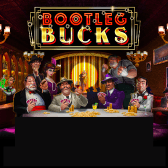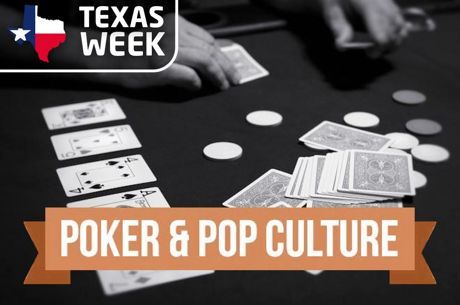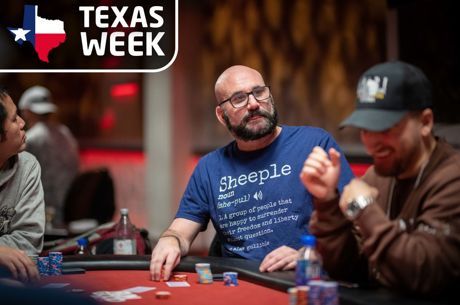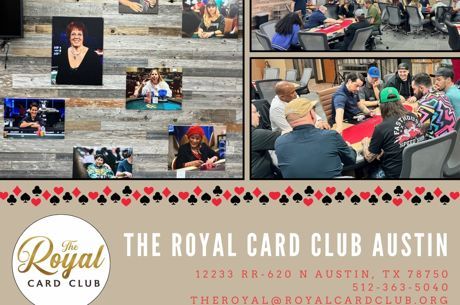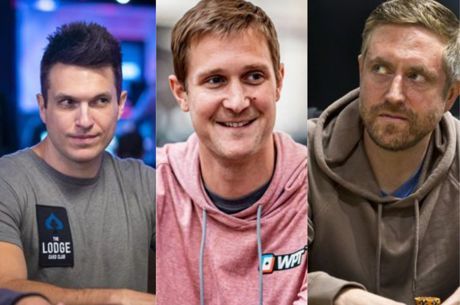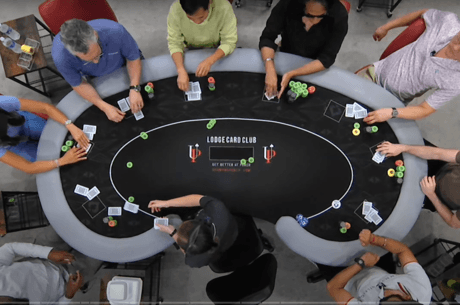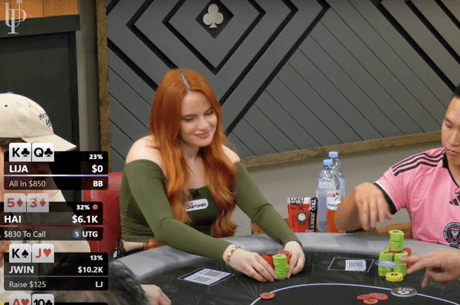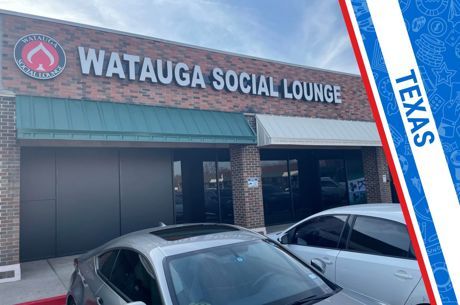History & High Stakes in Big D: Dallas Amvets Club Linked to Some of Game��s Best
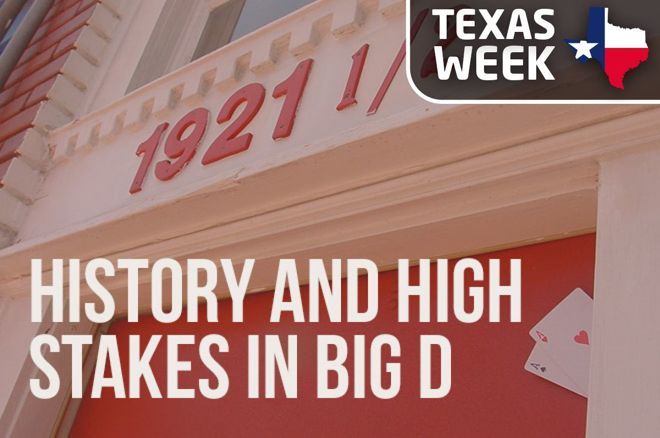
Table Of Contents
This article comes from the PokerNews archives and originally published on March 02, 2016. It has been updated as a feature during PokerNews' Texas Week.
Dallas' Greenville Avenue is bustling on a June afternoon as busy afternoon traffic flows along the street. In the last few decades, Greenville has become a hot spot --?a place to grab a bite to eat or hit a bar for a few drinks with friends. But 25 years ago, 1921 1/2 Greenville Avenue was home to the AMVETS Club, one of the best-known underground poker clubs in the country and host to some of the biggest names in poker history.
Several World Series of Poker bracelet winners bet and bluffed their way to success in this non-descript two-story, red-brick building in North Dallas.
Once a house of gambling, the room upstairs is now subdivided: one side serves as a photography studio and the other side a strip aerobics studio, complete with rows of shiny stripper poles. Below the club is a smoke shop and pizza joint with a stairwell sandwiched between them leading upstairs. A bright red sturdy steel door remains, used as security along with a camera and door buzzer outside --?you had to know someone to get inside.
The current tenants are a far cry from the old AMVETS, which ran games from 1969 to the mid-1980s featuring some of the best players at the time �� many now WSOP champions and even members of the Poker Hall of Fame.
 Texas
Texas
- Live Poker is allowed
- Online Poker is forbidden
- Online Casino is forbidden
- Sports Betting is forbidden
Getting the Gamble Going
In the 1930s and 1940s, illegal gambling was rampant throughout Dallas, with men like Benny Binion and rival Herbert Noble running casinos and numbers rackets throughout the city. As Gary Sleeper brilliantly outlines in his book I'll Do My Own Damn Killin', the gangster war between the two men left a long trail of blood, gang-style murders with pistols, shotguns, and even dynamite.
Part of that history would eventually include poker --?after all, it is "Texas" hold'em. In the 1960s, gamblers hoofed it across the state, seeking out action on the felt. Bob Hooks, now 80, was a known rounder in Dallas. A lifelong poker player, Hooks was looking for a consistent game in the area. After talking to a partner, the AMVETS Club was born in 1969.
"I knew all the players and he kept the paperwork, so we opened up," Hooks said from his home in Edgewood, Texas.
Officially, the club was known as AMVETS Post No. 4, and from the beginning it attracted some of the state's best players. The club is often confused with the Redman's Club, a series of other clubs that were not related to the original on Greenville. While poker and gambling halls were, and still are, illegal in Texas, club owners used charitable organizations like the AMVETS to charter their club, with the game's rake only covering charitable activities and club expenses. The ruse helped owners skirt the law, keeping the cards in the air. The term "club expenses" was open to interpretation as future club owner Byron "Cowboy" Wolford noted in his 2002 biography Cowboys, Gamblers, and Hustlers.
"Of course, when my business partners and I ran clubs in the old days, we interpreted the word 'expenses' very broadly," Wolford wrote.
The club was viewed as a private club, and mostly left alone by law enforcement. Hooks ran the club for a year, but the bright lights of Las Vegas came calling. In Vegas, Hooks became a pioneer of Texas hold'em. It was his friend and fellow Texan Johnny Moss who first introduced Hooks to Binion. Moss, who passed away in 1995, is a Poker Hall of Fame member, winner of seven World Series gold bracelets, and winner of the WSOP Main Event in 1970, 1971, and 1974. He was also a frequent player at Hooks' club.
?"I was with Johnny Moss out in Vegas and he introduced me to Benny Binion, and Benny was about to open up a card room at the Horseshoe. Moss says, 'Well, you need to give this man right here a job out here [in Las Vegas],'" Hooks said.
On Moss' recommendation, Binion offered him the job on the spot, but Hooks took a few days to consider the proposal. He had a family and farm back in the Dallas area, as well as a pretty successful card room, but ultimately accepted the job managing the Horseshoe's card room.
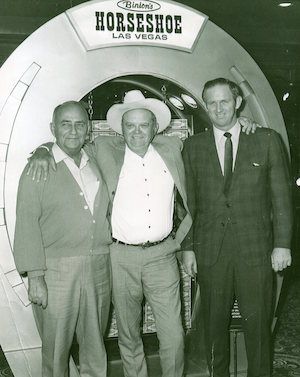
"I said yes... and it was the best thing that ever happened to me," he said. "If you were working with the big man (Binion), then that meant you were all right."
The move positioned Hooks, along with AMVETS alumnus Moss, into the limelight of the burgeoning poker world in Vegas. While Moss is known for winning the first two tournaments, Hooks found his own level of success, finishing second in the Main Event in 1975 to Bryan "Sailor" Roberts. Roberts, who was Hooks' roommate at the time, took the entire $220,000 prize, however; the event was winner-take-all until 1978.
Over the next few years, Hooks continued playing in Vegas while becoming more involved in the growing Vegas scene. After a year working for Binion, Hooks ran junkets for the Hilton, Flamingo, and Golden Nugget, and then managed the card room at the Golden Nugget for Steve Wynn from 1975-1978.
Meanwhile, the little poker club on Lower Greenville continued to roll on --?and attract big-name gamblers --?and a new owner. This new owner would become a major name in poker throughout the 1970s and 1980s.
Learn more about poker in Texas here!
Cowboy Up
After running the club a year and heading to Vegas, Hooks sold out to a Dallas friend. Its best-known proprietor then took over,?Byron "Cowboy" Wolford.
Born in Barbers Hill, Texas, in 1930 in the midst of the Great Depression, Wolford would become a poker legend. The son of an oil roughneck, his family moved near Tyler after his father came into a $1,700 insurance settlement from an auto accident. The family purchased a 45-acre farm and oil was promptly discovered on the property --?another boon to the family income.
Taking to horses and roping as a teenager, Wolford got his start as a professional rodeo cowboy. Retiring from the rodeo circuit at 30, he was later inducted into the Pro Rodeo Hall of Fame. Capitalizing on his poker prowess during rodeo stops, he entered the then-shady world of professional poker.
A poker player of the old school, Wolford hit the poker circuit before the top players were household names and TV networks broadcast hole cards and bad beats. His success at the table included a runner-up finish to Jack Keller in the 1984 WSOP Main Event, and winning a bracelet in 1991 in the $5,000 Limit Hold'em event for $210,000. Wolford's tournament career spanned four decades and he amassed $737,410 in winnings in nine cashes in the WSOP and totaled $902,000 in lifetime tournament winnings.
But before all his success in Vegas, in the mid-1970s Wolford took over the AMVETS. Unlike his predecessors, he invested heavily into improving the club, spending $30,000 for new carpeting, a fresh coat of paint, and a nice bar and kitchen. A steel door and buzzer were installed to keep the location secure. The card room was similar to a big meeting hall with three or four tables running: one high-stakes no-limit game ($10/$25) and a few lower-limit games. Players flocked to the club.
"It wasn't long before we had a hell of a no-limit hold'em game going," Wolford wrote in his memoir. "We also had two limit hold'em games going, and boy, business was good!"
And among those players was T.J. Cloutier, a member of the Poker Hall of Fame.
"In those days, that was a lot of money," Cloutier says. "I mean, everybody bought in for a thousand or more and there was plenty of money on the table."
Like Moss, Cloutier flourished on the felt, winning six WSOP bracelets, $4.4 million in WSOP winnings, $10.2 million in career tournament winnings, and finished second in the 1985 Main Event to Bill Smith, another AMVETS veteran. The Hall of Fame member and resident of Richardson, Texas, said the action was good at the club and Cowboy's efforts showed.
"I played there in the late-70s and early-80s," Cloutier said. "I was in Shreveport at the time, and I used to drive up from Shreveport to play in it. All the top players in Texas came to this one. Everyone that came into to town who drove in or flew into town came there to play. And there were big-time players."
After a few years, Wolford sold the club to Dallas resident Troy Inman. Wolford would continue to play and find major success. While living and playing in California, he also served as a host at the Ocean's Eleven Casino in Oceanside. In 2003, the gambling cowboy with a quick wit and wide smile passed away at age 72.
"I've lost one of my oldest and dearest friends," poker icon Doyle Brunson said after Wolford's death.
Among Cowboy's legacies was?the little club in Dallas that produced some poker stars.
Best Free to Play Slots
The Full House Continues
Around Dallas, Inman was a well-known gambler. His son Cory grew up in the club his father owned, serving coffee and doing odds and ends. Troy passed away several years ago, and Cory looks back fondly on the club and characters who played there.
"Cowboy had fixed it up really nice," he said. "He spent a lot of money on it. It had a nice bar. A lot of people had played in old smoky, dingy apartments, and this was a real nice type of business."
Cory grew up in Wichita Falls, the son of a lifelong gambler. After attending college briefly, he moved to Dallas when his father bought the AMVETS.
"It kept me occupied," he said. "I was a kid then. I sold chips and did just whatever anyone needed. If they needed coffee, I'd get them a coffee. I watched for about three years before I played any poker. There would be people coming in from Tennessee and all over to play."
The AMVETS games continued to flourish and even though the club would be closed in the early-1980s, soon-to-be big names continued to frequent the club, raising, folding, and scooping pots.
Big Names, Big Games
In its heyday, many world-class players called the AMVETS home. Poker Hall of Fame member Bobby Baldwin was, by some accounts, sleeping in his car for a time while living in Dallas and playing at the AMVETS. Baldwin went on to win four WSOP bracelets including the 1978 Main Event. In 1982, Baldwin became a consultant for the Golden Nugget, which would begin a long career in casino management. Today, he now oversees several Las Vegas properties as an executive for MGM and Mirage.

Another Main Event champion, Bill Smith, was a frequent AMVETS gambler. Smith bested a field of 140 players in 1985 to earn the bracelet and championship over Cloutier. Smith also earned fifth-place finishes in 1981 and 1986. He passed away in 1996.
A respected poker player and bookmaker at the time, Dick Carson played at the Dallas club and won a WSOP bracelet in 1985 in no-limit ace-to-five draw. A frequent big tournament player since 1980, Carson has over $600,000 in lifetime winnings. Another big player, Dallas' own Ken Smith had several top major tournament finishes including fourth in the Main Event in 1981. A master chess player, Smith also authored nine chess books, won many major chess championships, founded Chess Digest magazine, and worked as an assistant to Bobby Fischer in his historic 1972 match with Boris Spassky.
Legends Doyle Brunson and Amarillo "Slim" Preston are also believed to have bluffed a few pots at the AMVETS in their time. Other Texas-area players of note included Buck Buchanan, Milton Peel, Curtis Skinner, Bob Brooks, and Everett Goulsby.
Hijacking the Game
Throughout the 1970s, the AMVETS Club thrived. On an average night, a few tables might be packed with players, cards flying through the air. A few players might be sipping beers. Bespectacled Bobby Baldwin might be firing at a pot on the well-worn green felt, ringed with poker greats. A buzzer sounds above the din of clattering chips. T.J. Cloutier is seen in the security camera along the sidewalk below. He lumbers up the wooden stairs after a long drive west from Shreveport. The smell of cheeseburgers permeates the air as the cook readies the night's meal. The action is in full swing and everyone's having a good time. The games might last well into the next day, players coming and going through the night and early morning.
Now a retiree living in Justin, just north of Dallas, Diane Mason worked as a cook and waitress at the AMVETS in the 1970s before a career in management at Hollywood Park Casino. At the AMVETS, she served the day's meals and drinks, chatting with players as cars zipped along the Dallas streets outside.
"A lot of people frequented the club," she said. "A lot of people came by to have lunch, we'd have it open during the day. I was the cook there at the time. It had a lot of big poker players."
Details and the exact year are a bit sketchy, but it was midday in the late-1970s when the poker room became a crime scene. A table or two may have been running, other players hanging out for lunch �� maybe catching a game on TV. Mason and her husband had picked up the day's food at the grocery store and made their way to the club about 11 a.m.
"You have to come up a flight of stairs to get in," she said. "You're downstairs, seen on camera, and then you're buzzed in. Well, the funny thing that day is we didn't see anybody buzz us in. But we had all our groceries and as soon as we came up to the top level, they put a gun right to my husband's neck."
Fear gripped the couple as they surveyed the scene around them --?poker was the last thought on anyone's mind. Three men all armed with guns had tied up 30 players and employees as they ransacked the place of cash. The Masons were bound like the others as the robbers flashed their guns.
"They tied my husband up with a wire," Mason said. "They tied me up with a rope of some kind. I had wiggled [my hands] out of the rope, but I couldn't tell anybody because I was afraid they'd kill us. When they did leave I was the first one to get undone to undo other people. It was a very scary thing, I'll tell you that.
"We were tied up about two and a half hours on the floor. Everybody was face down, side by side. We felt like it was the last day of our lives. We really thought they were going to kill us."
After the robbery, police weren't notified due to the club's already illegal status. Law enforcement would have been interested in the robbery, but also possibly in the club's "unique" activities. Mason is unsure of the total amount stolen, but with the amount of cash in the place, it must have been quite a bundle.
"I'm sure it was quite a bit of money," she noted, "because some of these people carried four or five thousand dollars on them."
Raided
Through the years, police and law enforcement mostly left the AMVETS Club alone. Being a charitable organization helped shield the club from prying eyes, and management was diligent about security. For years, that worked. That changed on July 21, 1980.

Around 4 p.m., Charlotte McCullogh was washing dishes in the club's kitchen. It was her first day on the job and loud noises and shouting downstairs shattered the afternoon's atmosphere. Unable to open a glass door in front of the entrance's heavy steel door, agents from the Texas Department of Public Safety and Alcoholic Beverage Commission slammed a battering ram into the entrance, shattering the glass and knocking the door loose off the frame. Glass shards clattered to the sidewalk, but agents still couldn't get inside.
McCullough told the Dallas Times Herald at the time: "They were out there yelling 'open the fucking door!' We had to go open it for them."
Seven agents filed in, search warrant in hand, and guns drawn. They were led upstairs through an iron gate and heavy wooden door at the top of the staircase. They quickly began confiscating files, scouring through drawers, taking photographs, and making diagrams of the club.
The raid was the result of a lengthy investigation. Thirty-three people were arrested and more than $70,000 in cash was seized. No guns or drugs were found, nothing more than a few beers. Club members did not hide their derision.
"I'll bet half the cops in town knew about our poker games," one told the Times Herald after the raid. "We're just a few AMVETS and we're not robbing little old ladies playing bingo. There are people up here who fought two wars to make [the country] a democracy. Haven't they earned the right to play a little poker?"
Folding Your Hand
Reportedly, despite the raid, the AMVETS Club continued to operate another year or so. But the poker club's days were numbered, and it eventually closed. As years go by, exact reasons, dates, and events fade from memory. With no real written history, why the club shut its doors is unknown.
Looking back, some possible reasons for its closing could be the recession in 1981-1982. Times got tough and maybe cash for higher-stakes poker games wasn't quite as expendable anymore. Maybe the popularity of the World Series of Poker, as well as legal high-stakes games without the threat of jail time, lured more players to Sin City and other gambling-friendly states.
Whatever the reason, the Dallas AMVETS Club was a poker institution that holds an interesting spot in the history of the game. The underground club's history was a relevant starting point of where poker headed in the coming decades. From the ultimate success in the World Series to playing for some of the biggest stakes around, the little club at 1921 1/2 Greenville Avenue gave many players a start �� and plenty of big pots.
Author's note: Because of the nature of an underground club, verifying facts and events is very challenging. I have tried to find as many relevant facts as possible about the club and to be as accurate as possible. Exact dates and events were often unavailable, as many written records of the club do not exist.
For more reading on Dallas' checkered gambling past check out: I'll Do my Own Damn Killin': Benny Binion, Herbert Noble, and the Texas Gambling War by Gary Sleeper. Page-turning and detailed, Sleeper's work delves into Dallas' underground gambling in the 1930s and 1940s and the murderous war that raged between gangsters in Dallas.
Follow the PokerNews Texas Road trip here!
Sean Chaffin is a freelance writer in Crandall, Texas. His new book, RAISING THE STAKES: True Tales of Gambling, Wagering and Poker Faces, is available as an eBook and in paperback at Amazon.com. If you have a gambling or poker story idea, email [email protected]. Follow him on Twitter at @PokerTraditions.
*Lead image courtesy of Sean Chaffin.
**Photo of Johnny Moss, Benny Binion, and Bob Hooks, circa 1980s, courtesy of Hooks' family.
***Photo of Bobby Baldwin courtesy of the WSOP.
****Photo of AMVETS exterior today courtesy of Greg Clomberg Photography/gregblomberg.com.
Want to stay atop all the latest in the poker world? If so, make sure to get PokerNews updates on your social media outlets. Follow us on Twitter and find us on both Facebook and Google+!




